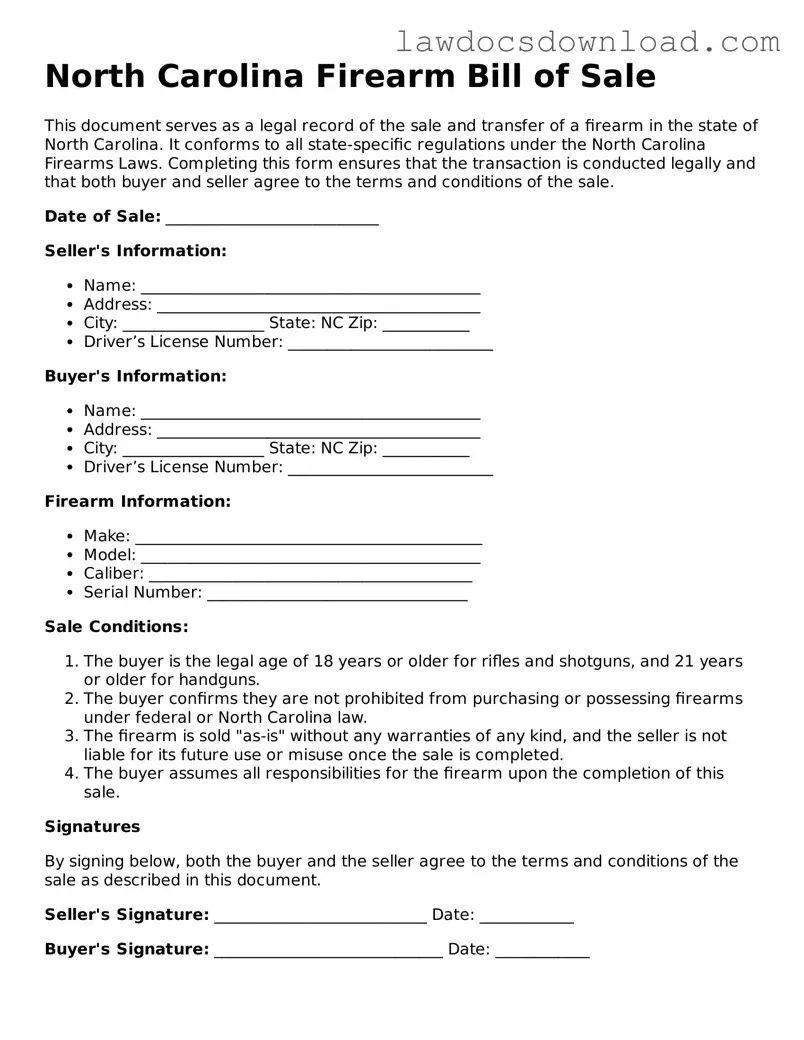The General Bill of Sale form is notably similar to the North Carolina Firearm Bill of Sale. Both serve as a formal document to record the sale and transfer of an item (a firearm in one case and various personal property in the other) from a seller to a buyer. They provide proof of purchase and change of ownership, often including details such as the description of the item sold, the sale price, and the date of sale. While the items being sold differ, the purpose and function of these documents are fundamentally aligned.
Another document resembling the North Carolina Firearm Bill of Sale is the Vehicle Bill of Sale. This form is used specifically for the sale and purchase of vehicles. Like the firearm bill of sale, it captures crucial transaction details—vehicle make, model, year, and VIN, alongside the sale price and the parties involved. Although one documents the transfer of a vehicle and the other a firearm, both are integral to establishing legal ownership and ensuring a transparent transaction process.
The North Carolina Boat Bill of Sale bears similarity as well. It is specifically tailored for transactions involving boats, including details such as hull ID, make, year, and an oar for verification of ownership and transaction legitimacy. Much like the Firearm Bill of Sale, it acts as a legal receipt that confirms the sale and transfer of ownership from one party to another. Clearly, despite the difference in the type of property, the foundational purpose of documenting a legal exchange in a verifiable manner remains consistent.
The Business Bill of Sale is also comparable. This document is utilized in the sale of a business, detailing assets that are being transferred to the new owner. This would include equipment, inventory, and possibly the business name itself. The structure of this document echoes the Firearm Bill of Sale, with its focus on delineating the specific details of the transaction, thus ensuring both parties have clear evidence of the transfer of ownership under agreed-upon conditions.
An Equipment Bill of Sale parallels the North Carolina Firearm Bill of Sale too. This form specifically relates to the sale of equipment, listing details such as the equipment’s description, make, model, serial number, and condition, along with the sale price. Its purpose, to record a transaction and transfer ownership securely, mirrors that of the firearm bill of sale, even though the items in question differ. Each serves to protect the rights and obligations of both the buyer and seller in the transaction.
The Livestock Bill of Sale shares similarities with the North Carolina Firearm Bill of Sale, despite the different kinds of property they concern. This form is designed for the sale of livestock, noting specifics such as breed, sex, health status, and quantity. Both documents function to legally document the details of the sale and transfer ownership from seller to buyer, providing a record that can be used for registration, insurance, and proof of ownership purposes.
